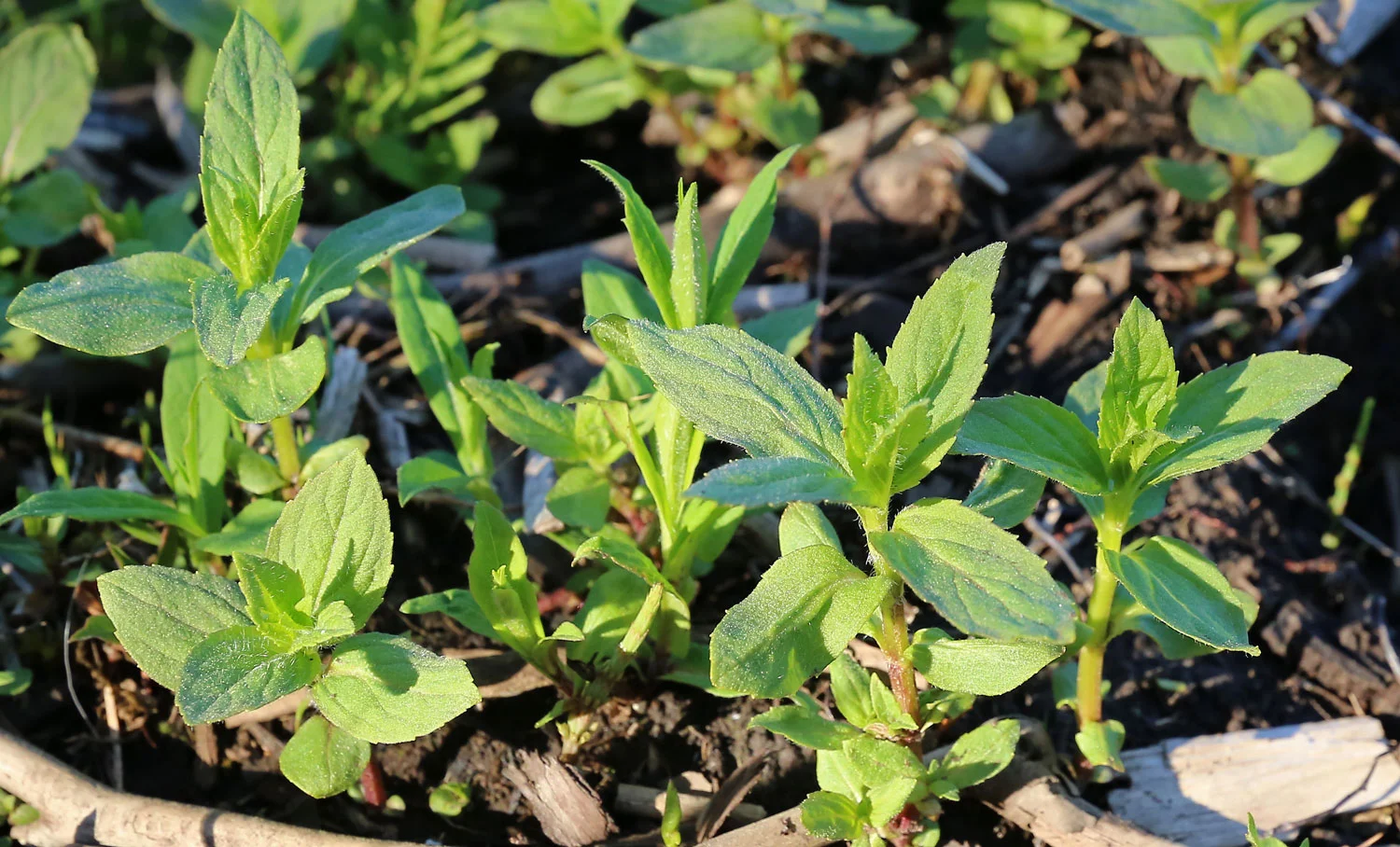Field Mint
/
Walking along a stream in Southeast Alaska you suddenly realize that there is a sparkling, refreshing scent that makes you smile. Field mint is growing here! When you look down there is a jumble of green to sort through. Your fingers alight on the mint and bring a leaf to your nose. Breathing in that aroma makes your world becomes a little bit clearer and calmer.
In Southeast Alaska field mint (Mentha arvensis) loves to live along streams and beside lakes, popping up in spring and good for harvesting from spring into early summer. It is both edible and medicinal. Today I’m just sharing enough to give you a basic familiarity with this plant and a starting point for using it.
Growing up to two feet tall, field mint has opposite leaves that are rounded to lanceolate, a single stalk or sometimes branching, and that stalk is square in cross section. In late spring to early summer tight clusters of light violet flowers are tucked into the junction of the stalk and leaves.

Young mint plants hanging out with buttercup, grass, and baby lupine
It is early in the year, and the mint might not be blooming yet. This might help you to see the mint plants...

You can pick a few leaves to put on the dash of your car and enjoy for the day, or you might like to harvest some mint to add to a salad or to dry for tea. Nip the tops of the plants off with scissors or your thumbnail leaving plenty so that the plant can continue to grow.

What could be better than harvesting aromatic mint on a sunny day in this beautiful place?

Young mint plants colonizing a beaver dam.
- Fresh leaves should be put in the cooler so that they don’t wilt during the trip home.
- If you nip them off with your thumbnail then the tip of your nail will turn black, but will clean up pretty easily (as opposed to some plants that dye your fingers for days).
- Spittle bugs love mint, and those hoppy insects will slime most of the mint plants in a patch as the growing season progresses.
- Being streamside, mint is often gritty and will need a few good rinses.
- Wild mint is more delicate than most garden varieties.
- Mint is easy to grow - so easy that it often slips out of it's bed in the middle of the night and roots in with all the other herbs.
- Store dried mint in a tightly sealed canning jar in a dark place.
- Field mint has a limited shelf life after drying. I like to use it up within 6 or 8 months.

Rinsing in a salad spinner is nice because the leaves can be lifted out in the colander and the grit stays in the bowl.

After rinsing the bowl and spinning the leaves they are ready to go on the dehydrator racks.
Keep the heat low in the dehydrator. At about 90 degrees the leaves should be dry in 3 to 5 hours. If the leaves bend instead of breaking then they are not dry yet.

Field mint blossoms snuggle in where the leaves and stalk meet.
You can also pick the stems and rubber band them together in small bunches. Hang the bunches upside down in a warm, dry area that has some air movement. When they are dry then strip the leaves off of the stems.

If the mint is handled well and dried quickly then it will retain some of the green color.
When that big bag of mint is dry and ready to store then it is going to crunch up into a pint canning jar. Don't worry, it only takes a small amount to add flavor to recipes, or to make a mug of mint tea. Mix your mint with dried spruce tips for a delicious tea.
- Mint tea is helpful for digestion, or can be used to stimulate appetite.
- Mint tea can calm an upset tummy.
- Mint has many other medicinal uses that I am not going to cover here. Continue your exploration of this delightful plant!
- Fresh mint is a source of vitamins A, C, and K, and minerals calcium, iron, and manganese.
Happy Gathering!
Alaska Beachcomber
Related posts: Wild Tea, Foraging Stinging Nettles, Tasty Spring Greens, Harvesting Devil's Club Root, Devil's Club Sun Tea.
Great finds
- Pay N Play Kasinot 2025
- Casino Sites UK
- Best UK Non Gamstop Casinos
- Non Gamstop Casinos
- Non Gamstop Casinos
- UK Casinos Not On Gamstop
- Non Gamstop Casino
- Gambling Sites Not On Gamstop
- Non Gamstop Casino
- Non Gamstop Casino
- Non Gamstop Casino Sites UK
- UK Casino Not On Gamstop
- Meilleur Casino En Ligne
- Gambling Sites Not On Gamstop
- Best Casinos Not On Gamstop
- I Migliori Casino Non Aams
- Non Gamstop Casino Sites UK
- Casino Sites Not On Gamstop
- Non Gamstop Casino
- Casinos Not On Gamstop
- Slots Not On Gamstop
- Non Gamstop Casino Sites UK
- Casino Non Aams Sicuri
- Meilleur Casino En Ligne Fiable
- I Migliori Casino Online
- Casino Crypto Liste
- Casino Online Migliori
- Siti Non Aams Scommesse
- Meilleur Casino En Ligne
- Meilleur Nouveau Casino En Ligne

